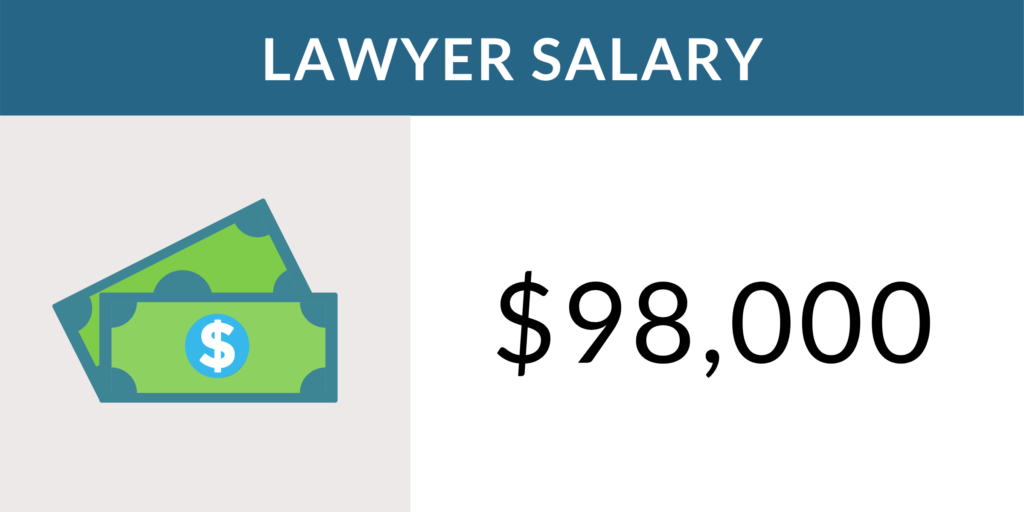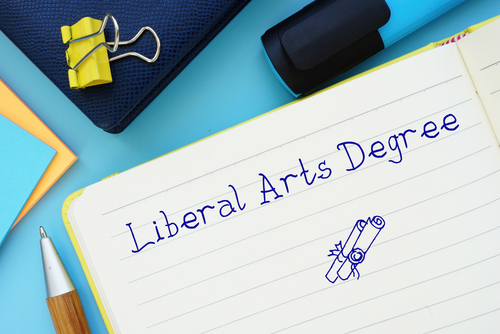Find Your Perfect School
Choosing a college or university and making a final decision about what degree you’re going to enroll in are two of the biggest decisions you make. It is a major step that draws the future for you and the family you’ll make.
Check this out: Best Online Associates in Liberal Arts Degrees
If you’re interested in several subjects and want to develop practical, intellectual, and transferable life skills such as effective communication, acute analysis, and a flair for solving real-world problems, pursuing a liberal arts degree would be a great fit.
A Versatile Degree
But out of sheer curiosity, you may ask yourself, “What can I do with a liberal arts degree?
The short answer is ‘anything’–you can do anything you want to with a liberal arts degree; however, there are some caveats, and a liberal arts degree will offer more value to some students than others. But first, let’s dive into what a liberal arts education is because it is a more nuanced discussion than one might think.
Not to be confused with liberal arts studies, a liberal arts degree–despite being a common target of skepticism–is one of the most promising development pathways for building the cognitive skills of meta-analysis and critical thinking that are crucial in countless professions.
In other words, liberal arts schools cultivate the mental skills needed to succeed in an ever-changing world by cultivating the cognitive skills that are timeless and offer near-universal professional value.
Liberal arts schools prioritize systems that teach students how to think over what to think–which is why liberal arts colleges are often attributed with the ill-conceived archetype of these schools being artsy and liberal. But this conception could not be further from the truth.
Liberal arts schools adhere to only one principle–that is, the pursuit of truth through freedom of thought–which necessarily negates any one model of preference, such as artsiness or liberalness.

That being said, the liberal arts commitment to freedom of thought often presents as a laid-back educational format at particular schools that have been labeled as artsy or liberal. There are, however, plenty of liberal arts schools that uphold cultural environments that would commonly be referred to as conservative or formal. In other words, like the liberal arts education itself–a liberal arts school evades any one definition and can manifest in a variety of formats.
What is a Liberal Arts Education?
A liberal arts education is often confused with liberal arts studies. The former is a mode of education followed by an entire college or university, while the latter is a group of studies within a certain subject matter–specifically, such as art, writing, or theater. This confusion is understandable due to the lack of any single comprehensive definition to fully define what a liberal arts education means.

If there is not any one definition that fully defines liberal arts education, then how do we successfully explain what it is? While different in their particulars, there are common threads of values and beliefs that unite all liberal education programs and will string together a concise image of what it is.
Ironically, a liberal arts education–which is a traditionally secular model of education–has much in common with religion. More specifically, a liberal arts education adheres to a certain value set, much like religions adhere to values laid out in their scriptures. These values are interpreted differently at different schools–much like different denominations interpret scripture.
And just as it would be a fruitless effort to attempt a definition of all branches and denominations of Christianity by defining the profile of a single church’s operation, it is equally unhelpful to attempt to define all of liberal arts education by highlighting the example of a single school.
Rather, to develop a meaningful conception of the liberal arts education–and why it offers meaningful value to students–we should look at the underlying values and principles that all liberal arts schools have in common or at least those that they try to replicate.
After all, like certain denominations fail to truly represent the values of the scriptures they cite, some liberal arts schools represent the liberal arts ideal less than others. Despite drawing inspiration from European antecedents, the liberal arts education model is strongly associated with the American higher education system.
Most liberal arts schools abroad draw from the American liberal arts model.
What is a Liberal Arts Degree?

Like many other operations definitions that target exceedingly vague subjects in scientific inquiries, operational definitions of the liberal arts education are exceedingly vague in turn. US News & World Report, a national authority on higher education, defines a liberal arts school as a school that “emphasize undergraduate education and award at least half of their degrees in the liberal arts fields of study.”
While not entirely complete or insightful as a definition, it does seem to function as a label that correctly identifies most liberal arts schools; however, it does little to help prospective students by informing them of what to expect. A liberal arts education is more of a model of intellectual inquiry that can be applied to any particular area of study.
But to keep things grounded, let’s dive into what to expect with a liberal arts degree program.
The Liberal Arts Degree Profile
- Seek to impart a broad general knowledge and develop general intellectual capacities, in contrast to a professional, vocational, or technical curriculum (Encyclopædia Britannica)
- Students typically major in a chosen discipline while being exposed to a wide range of academic subjects
- Typically offer robust curriculums in humanities subjects taught as liberal arts
- Many are exclusively undergraduate programs
- Some lead to graduate or doctoral degrees such as business administration, nursing, medicine, and law
- Most commonly are independent institutions
- Some function as parts of or are affiliated with a large university
- Distinguished by a generalist curriculum
- Distinguished by a commitment to smaller class sizes
- Distinguished by a commitment to strong student-to-instructor ratios
- Liberal arts teachers focus more on teaching than group-based research
- Liberal arts teachers often take on a personal interest in students’ success
- Likewise, students are encouraged to participate in discussions
- Students often seek out liberal arts education for this level of connection
So what are the big takeaways here? The TLDR is that a liberal arts degree program offers a level of intimacy and personalized engagement that is much less likely to be replicated at larger universities with more populous classes where an instructor’s attention will be diffused by a large number of students.
For students with more introverted tendencies or who like to participate in engaging discussions without having to compete for a voice, a liberal arts classroom might be the ideal environment.
The Administrative Dimension of Liberal Arts

Astute students prospecting the liberal arts experience might be keen to know the administrative reality behind the scenes. In fact, the administrative component might be the secret ingredient contributing to what many students conceive of as “liberal arts magic.”
Many liberal arts students refer to an elusive component of their education where people are just happier. This is at least true in the context of liberal arts school administration. According to esteemed sources, there are two primary factors contributing to this reality:
On the one hand, smaller class sizes and more conservative allocation of resources contribute to a more cohesive and financially flexible operation that is more capable of surviving rough times.
For this reason, administrational turnover is less common at liberal arts schools, and staff report higher levels of fulfillment–evidenced by high levels of reported satisfaction in both faculty and staff (The Liberal Arts College Adapting to Change: The Survival of Small Schools).
On the other hand, the smaller operational systems of liberal arts schools make it much more feasible for these schools to adopt experimental or divergent new strategies. Their small size makes them more nimble and strategically flexible.
For example, the Great Books curriculum could only be tested and ultimately adopted by St. John’s or Shimer due to their liberal arts model (The Liberal Arts College Library and Collegiate Myth; Clemmer, Joel 1997).
Another administrative aspect that imparts a strong theme to the liberal arts experience is the common commitment to a residential model. In many cases, a liberal arts school offers residential programs to students, which in most cases represents the first experience of living away from home for many students.
While this confers a high level of responsibility on residential schools, it also creates a strong sense of community and a strong bond between the students and the school in which they live.
This strong sense of community commutes a sense of family to students that is often carried through graduation into a closely-knit alumni group. This is a major benefit for socially minded students who might be interested in fostering long-term professional and academic relationships.
Not to mention that, in many cases, this can lead to employment opportunities or chances for further professional development.
The Reality of Employment for Liberal Arts Graduates

It’s time to address the elephant in the room. Many students reading this will have heard the overly critical and damning analyses of liberal arts schools. For years there has been a common phrase passed around by skeptical groups referring to liberal arts students–that is, “unemployed and unemployable.”
Thankfully, this could not be further from the truth, and we have all the data we need to paint a picture that is quite to the contrary. The Associate of American Colleges and Universities put this myth to bed with their research compiled in the report entitled Liberal Arts Graduates and Employment: Setting the Record Straight.
Here is a breakdown of the most impactful conclusions elucidated in the report:
- 4 out of 5 employers agreed that all students should acquire broad knowledge in the arts and sciences, which is characteristic of the liberal arts education
- 93% of employers agreed that demonstrated ability for critical thought, capacity for complex problem solving, and clear communication–all of which are primary areas of focus in liberal arts programs
- Only 16% of employers want applicants to have knowledge and skills for a specific role or position
- Only 29% of employers want applicants to have knowledge and skills that apply to a range of fields and positions
- 55% of employers want a wide range of skill sets and knowledge combined with field-specific skills and knowledge
- Liberal arts majors are predicted to earn slightly more than physical sciences majors straight out of college
- Liberal arts and sciences education programs are the primary drivers of intellectual capital in the United States
So to summarize, according to self-reported information from actual employers–liberal arts graduates make up the ideal candidate profile due to their wide range of skills and knowledge bases combined with a key field-specific discipline. Knowing this, liberal arts students can lean into their strengths to compensate for any weaknesses and make themselves into ideal professional candidates.
According to the same report, these are the top 15 professions for liberal arts graduates:
- Elementary and Middle School Teachers
- Lawyers, Judges, Magistrates
- Managers
- Postsecondary Teachers
- Chief Executives and Legislators
- Education Administrators
- Social Workers
- Secondary School Teachers
- Counselors
- Sales Representatives
- Clergy
- Retail Sales Supervisors
- Secretaries and Administrative Assistants
- Accountants and Auditors
- Marketing and Sales Managers
Many of these professions have one thing in common–an element of social engagement and value. In other words, liberal arts graduates seem to excel in careers where they can leverage a love of people; however, this is also noticeably balanced in counterintuitive positions of accounting and auditing–which demonstrates the flexibility of the education.
This is further evidenced in the figure that over half of professionals in the social services industry hold a liberal arts degree, whereas only about a quarter of professionals hold a liberal arts degree in the context of all professions.
Liberal Arts Education and Career Trajectory

There is another element of the liberal arts education narrative that contributes to its value, and that is the professional and academic trajectory of students. A whopping 40% of liberal art graduates go on to earn a graduate degree, according to Inside Higher Ed. This is largely due to careers in sociology, economics, and political science requiring at least a Master’s degree.
This points to a high level of mastery in liberal arts professions, which contributes to the reason why employers are becoming keener and keener on hiring liberal arts graduates. Similarly, earning a liberal arts graduate degree is an excellent method for improving salary potential–even for those who might not have previously held a liberal arts degree.
A liberal arts graduate degree can improve earning potential by upwards of $20,000–a figure that is entirely dependent on one’s chosen profession. Beyond simple earnings bumps, students can leverage a liberal arts education for better chances of admittance into highly competitive graduate programs. For instance, in past years, law schools have been more open to admitting students with key liberal arts studies than to students with traditional backgrounds in criminal justice.
A note on liberal arts graduate schools–it is important for students to realize that a broad area of study does not excuse a lack of focus. One potential weak point of the liberal arts education philosophy is that studying a range of subjects might negatively influence students with a proclivity for distraction.
Particularly in the case of graduate education and pursuing high-end employment, it is imperative that students demonstrate a chosen specialty and desired professional focus.
Making the Most of a Liberal Arts Degree

Conversations about the value of a liberal arts degree are misguided if they do not ultimately arrive at a discussion of how to actualize–and, more importantly–how to maximize this value. As mentioned above, the most important aspect of maximizing the value of a liberal arts education is compensating for its inherent weaknesses.
Specifically, this refers to the notion that liberal arts education facilitates freedom of thought and inquiry, which can often lead to a lack of focus in students. Thus to compensate for this, it is important for students to demonstrate their chosen area of expertise and professional focus wherever possible.
So here are some key methods for doing just that:
- Pursue research projects in an area related to your career aspirations
- Look to find an internship that matches these aspirations
- See if you can find a unifying focus that can be adhered to throughout a broad area of studies–for prospective law students, for instance, look to apply a lens of law and legality to psychology studies
- See if your professors have any connections to the profession you are interested in
- Likewise, take advantage of any professional connections in your alumni network that could facilitate your professional advancement in that area
The major theme here is that the ability to sell one’s self is extremely important for graduates of a liberal arts program. Despite the reality that employers desire the traits of a liberal arts graduate, there are still pervasive stereotypes in the job market to consider and overcome.
For instance, a graduate of a technical college will have no trouble convincing an employer about their desired focus–because the nature of their degree demonstrates it. For a liberal arts degree holder, however, whether by stereotype or by genuine inquiry, employers will want reassurance that the student has demonstrated the appropriate level of commitment to commiserate with one’s life career.
By peak earning age, liberal arts degree holders make more than their technical degree counterparts. This demonstrates that as liberal arts graduates become more strongly positioned within their chosen careers, they begin to earn more and more.
Liberal arts graduates can make the most of their degree program by building as many career specialties as possible as early as possible.
The Most Lucrative Education Jobs And the Degrees That Can Prepare You
Leveraging a Liberal Arts Degree for Success

So we have covered what a liberal arts degree is, why it’s valuable, and how employers will view it. We have established how to lean into its strengths and how to compensate for its weaknesses in the context of convincing prospective students of its utility and value.
But we should provide some coverage to students who are convinced of the value of liberal arts education and who want to begin working to increase its value proactively–either as high school students or recent college graduates with their eyes on a liberal arts graduate program.
One of the most important things that a student can do to maximize the value of a liberal arts education is to fully understand the methodology of its instruction. Abstract thinking, critical analyses, and meta-comparisons are the tools of the trade in liberal arts education. Students interested in enrolling in a liberal arts degree program should begin familiarizing themselves with these models of inquiry.
How can you do this? A great place to start is to read the work of the greats–the greatest minds of the mental masters who graced the subjects of the liberal arts with their genius. If you are unsure of your exact direction, you can start with the originals–philosophers and writers of old who sought to tease out the secret meaning of the universe without technology or modern science, who only had their natural cognitive faculties to unravel the mysteries of the universe.
Like a muscle, one’s capacity for abstract thought and critical analyses is developed over time through strenuous and repetitive use. There is no shortcut for developing this proclivity, which is likely why it is such a desired trait profile for employers. If you can begin developing these skills early, you can hit the ground running in your liberal arts degree program–and hopefully multiply all the value structures advocated in the sections above.

After all these discourses come to the most critical question, is a Liberal Arts degree worth it?
Contemporary liberal arts programs consist of different major and minor subjects that fall under social sciences, humanities, and social sciences. Graduates of liberal arts degrees are typically creative and self-analyzing. But their education has equipped them with the ability to identify, analyze, and address social, political, economic, and environmental problems.
Going back to our query if the liberal arts degree is worth it, here are some points you may consider:
- Liberal Arts Offer Several Exciting Majors and Minors
Liberal arts programs typically consist of various stimulating subjects, and one or two of these could be your favorite. A liberal arts program allows you to choose a major and a minor. Taking courses you love makes education more interesting and enjoyable – learning them seems effortless. It makes your preparation for a future career a pleasant journey. Here are some of the most popular courses in liberal arts:
- Humanities
- Literature
- Theology
- Art
- Education
- Journalism
- Theatre
- Music
- Social Sciences
- Psychology
- History
- Sociology
- Economics
- Political Science
- Women’s Studies
- Pre-law
- Natural Sciences
- Physics
- Biology
- Engineering
- Chemistry
- Environmental Science
- Sustainability Studies
- It Develops Your Creativity and Critical Thinking Skills
Most liberal arts programs allow you to learn about various topics and subjects, and many of them focus on developing your problem-solving and critical thinking skills, regardless of the subject you’re taking.
- Liberal Arts Prepare You for Various Careers
The diverse courses that you study in a liberal arts program can give you a good understanding of several subject matters. And as you may have noticed, a majority of liberal arts colleges require prospective enrollees to submit information other than their academic background. The reason is – these schools want to know your interests which may include arts, community service, leadership development, student government, sports, etc.
They are looking for signs of creativity, critical thinking, focus, and problem-solving skills. These are the same traits many employers look for in job candidates and employees. As a liberal arts degree holder, your understanding of the arts and sciences combined with your interests and skills can give you an edge over other candidates when you apply for a job.
- It Awakens Your Social and Cultural Awareness
The cultures, perspectives, worldviews, and beliefs of other people are hard to comprehend. But in a liberal arts program, you will develop intercultural awareness because it covers diverse subjects, including religion, economics, business, history, music, art, and cultures of other countries and societies.
These are just a few of the many benefits of pursuing a liberal arts degree. These are the ones that can provide answers to people who ask if the liberal arts degree is worth it.
Funding a Liberal Arts Education
Given the enormous professional and academic opportunities available to graduates of a liberal arts education, it shouldn’t be tremendously surprising that private liberal arts schools brandish some of the most titanic tuitions in higher education.

Extremely qualified faculty are hired in numbers similar to large state institutions but are allocated to small class sizes–and this personalized tutelage is something for which you will have to fork over some cash.
That being said, liberal arts schools are also typically generous with financial aid programs and scholarships. As mentioned in the above section, making the most of a liberal arts education starts early–by developing the skills needed to succeed at these schools.
And if you earn financial support from your liberal arts program, you will simultaneously set yourself up for professional thriving while also lessening the financial burden of liberal arts tuition.
You can do this by conducting research–find out what your desired liberal arts program looks for and begin cultivating those traits and skills. These skills of self-development and self-selling will be recurrently rewarding throughout your education and professionally as a liberal arts degree holder.
Before you go, see: Best Bachelor’s in Liberal Arts and Humanities Careers

